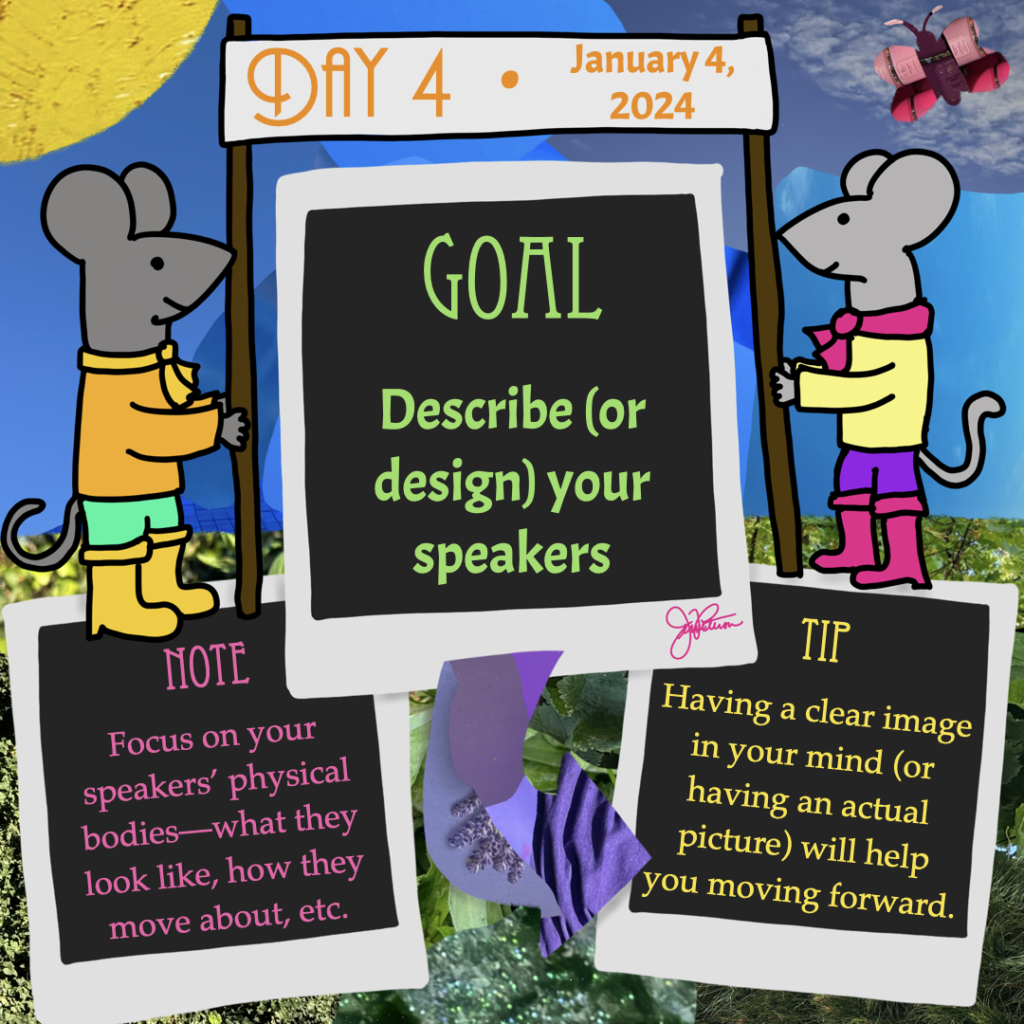
Goal: Describe (or design) your speakers
Note: Focus on your speakers’ physical bodies—what they look like, how they move about, etc.
Tip: Having a clear image in your mind (or having an actual picture) will help you moving forward.
Work focus: Create/Make/List
Yesterday you identified who your speakers will be. Today the goal is to dig deeper and describe your speakers (or design them if you are creating an alien world, for example). As you describe your speakers, focus on areas of physical description. To help you get started, I’ve listed some basic questions for you to consider here.
What do they look like? What basic body parts do they have?
Words for body parts provide a rich trove for future linguistic development. Consider all the English words we have based on body terms: You hand someone a package. You head in the direction you are facing. You can go back to another area or look to the front. These examples just scratch the surface of ways you can use body terms to explain movement or location within the world around you, and it doesn’t even begin to mention all the ways idiomatic expressions can come from body terms. So as you describe your speakers, think about what basic body features they have. If your speakers are not human, I cannot understate how far an image or drawing can go in helping you solidify features of your speakers. Whether you find an image online that you can use as inspiration or sketch the basic features of your speakers, having a picture/drawing will be incredibly helpful.
Do they have any unique markings or characteristics?
If your speakers look like other beings in your conworld, take a moment to consider if there is anything that sets your community of speakers apart from those other beings. The answer may be “no.” Your speakers may look like all the other inhabitants of the same species, and that’s absolutely fine. But if your speakers are taller than the average inhabitant (or shorter), furrier (or less furry), faster (or slower), then make sure you take note of that. It can help you figure out ways to talk about your speakers later on as you develop the language. Also, some unique characteristics may be chosen by your speakers. For instance, maybe your speakers choose to mark themselves with specific types of tattoos when they reach a certain age. Those are good details to know as you move forward.
How do they move about in their environment?
As you think about what your speakers look like, also consider how they move in general. Do they fly? Swim? Walk? Crawl? When you begin creating words in your language, you can use this information to better decide what basic verb roots should apply to your speakers and the ways they interact with their world. They can also serve as a good source of derivations and idiomatic expressions.
At this point, you are focusing on providing a strong foundation of information that will help you much later on. Make sure you keep this information in a place that is easy to access so that you consistently develop features and vocabulary that match your vision for the speakers and their world.
